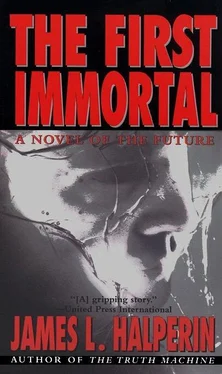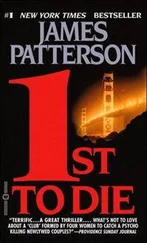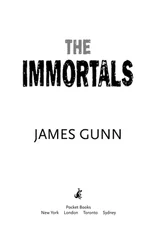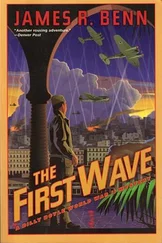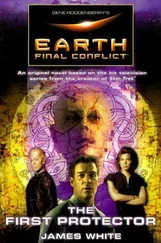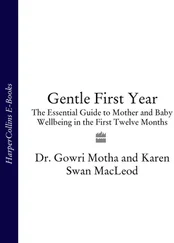Shit! Five goddamn minutes.
My eyes pleaded with Abel. “Well, is she gonna be… okay… or not?”
“Too soon to tell about her brain, but her nervous system’s a mess.”
“Can’t the machines repair nerve damage?”
“Already working on it.”
I tried to comfort my pet, but Wendy II stared back with vacant, anguished, unrecognizing eyes. She began to hyperventilate, and suddenly let loose with a scream that seemed to emerge from her heart, freezing all of us into postures of shock, until finally she subsided into a pathetic, continuous whimper.
I yelled to Abel, “Put her under. Now!”
Abel administered IV anesthetics; seconds later my dog was unconscious. I wondered if she would ever wake up, and more to the point, wondered if I wanted her to. My poor, sweet girl, I thought. What have I done to you?
“I guess there probably aren’t too many experiences more painful than having a billion machines repairing every nerve cell in your body,” Stephanie suggested, hugging me. The twenty-eight-year-old technician had worked for me for five years and had never so much as shaken my hand before that moment. “The machines have done their best; we’ve done our best. We’ll just have to wait until she wakes up.”
The rest of the group gathered around, offering words of reassurance. “Still, she could be okay.”
“It’s too soon to tell.”
“You did all you could, Trip.”
“She really might be fine.”
“Absolutely,” Abel added. “Tomorrow, ol’ Wendy-girl could be prancing around like none of this ever happened.”
“You never know,” I answered in a stoic voice. But trembling hands betrayed my thoughts: What had I been thinking? Who the hell did I think I was to risk her life like that?
I lowered my head, turned away from the others, and absently set my primary AI on manual. A table and keyboard grew from the wall. I typed: WHO AM I? then gazed at the words that had formed on my screen:
Who are you?
Or more precisely, what are you?
You, George Jacob Crane III, are a carbon-based life-form, approximately 90 percent hydrogen and oxygen atoms by weight, a member of the species Homo sapiens.
But what is your essence? What differentiates you from the billions of other humans with whom you share this planet?
Imagine it is the turn of the millennium, and I am your 20th-century laptop. There are countless computers identical to me; same hardware, same operating system. Yet unless you could transfer my data, you might not trade me for 100 others, freshly minted in their boxes. The vessel is replaceable, but the information is priceless.
Now suppose I were smashed with a hammer or dropped from a fourth-story window. My data might well be salvaged.
But were I to be melted in a vat of acid along with my backup discs, oh woe! You, sir, can be described in similar terms. Should your heart stop beating, doctors might restore you to life, a miracle not possible just 50 years ago. Yet once your brain cells die, 20th century science cannot resuscitate you. During the next century that may change, and it is certain that life and death will continue to be redefined. Even now, before the third millennium, organs are routinely transplanted from one person to another. Personalities are altered with medications. Artificial hearts and kidneys are used routinely. If your species survives long enough, the 20th century’s most feared diseases will become curable. Intelligence, even wisdom, will be artificially enhanced, and emotions fine-tuned. There will be human cloning and eventually a halt to the molecular processes of aging. It is only a matter of time.
This reality may not yet be evident, but in the future you’ll understand that ordered information, like the digital bits in my computer, comprises all memory, thought, emotion, perception, and consciousness: the totality of that unique essence which is you. Humans might achieve such an immortality through the simple preservation of each brain’s unique information. Everything else about you is replaceable, or someday may be.
Who are you? Your essence is information about the unique experiences, emotions, and thoughts of your life; perhaps nothing more, and unquestionably nothing less.
June 29, 2064
—Never Apart, the world’s third largest teledildonics agency, settles a lawsuit filed against it by two couples whose semblances were mistakenly transposed and projected to the wrong bodysuits, causing each of the four to engage in virtual sex with the wrong partner. A spokesman for the firm says, “It was an isolated incident, which has never happened before and probably never will again. Teledildonics is still the ideal way for separated lovers to ‘keep in touch.’”—Seven hours after a fogging agent cloud of antireplicators successfully consume all of Professor Robert Stephen Kermel’s renegade foraging nanoreplicators in New York City at 1:03 this morning, President Jason Tara lauds the World Nanocrisis Agency’s adroit response to yesterday’s terrifying incident. “The defenders almost always have the advantage,” Tara assures the public at a memorial service for Kermel’s seven irreparable victims. “That’s because, while it takes several minutes for a replicator to reproduce itself, a nanodefender can usually find and consume a replicator in less than a second. As long as the defenders outnumber the replicators, the defenders will win. Fortunately.”—The number of languages spoken in transactional discourse on Earth falls below 1,000 for the first time in recorded history, an 82% drop in just 50 years. Some experts predict that by mid-millennium, English and Mandarin Chinese will be the only languages still in general use.
None of us had slept. Around midnight we’d brought Wendy II up to my apartment. Now spread out in chairs, the couch, or on the floor, my eight associates had been keeping vigil with me. We were family now, and Wendy was one of our own.
“Y’know, Trip,” Paul Adler said, “even if Wendy has brain damage, we could freeze her again. There’s a decent chance they’ll be able to bring her back within a decade.”
“That’s pretty to think, Paul,” I answered, “but it could be more like a century.”
“Why do you say that?” asked our AI engineer. “Once we’re reviving people en masse, the sciences now advancing in short hops will suddenly take giant leaps. And other technologies are bound to sprout from them.”
“We can fix brain damage now ,” Stephanie volunteered.
“Not all of it,” I said.
“Not yet,” she said, “but by the time the nanomachines revive a few dozen undamaged humans, the AIs’ll know everything about our brains. They’ll teach the brain-repair D/A’s to pattern language skills into any brains that’ve lost them. Same goes for sensory interpretation, history, science, aesthetics, math; all the basic, well, software, I guess. We’ll clone new cells to replace those damaged beyond restoration. In ten years, I’d bet just about every person who comes out of biostasis will be smarter than he or she was when frozen, smarter than ever before. The same can be done for Wendy.”
“But we can never restore lost memories,” I said, “or reconstruct identity. Even if we put her in biostasis and wait till the science matures, we’ll just wind up with a healthy, smart new puppy in Wendy’s body.”
“Better than nothing,” Stephanie said.
“Maybe not, at least not as far as she’s concerned. To her, it’ll be as though she went to sleep and never woke up. Without memory, she’ll just be another golden retriever, a new dog composed of Wendy’s atoms. She won’t be Wendy anymore, not for herself, not for me.”
Читать дальше
